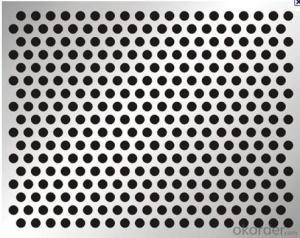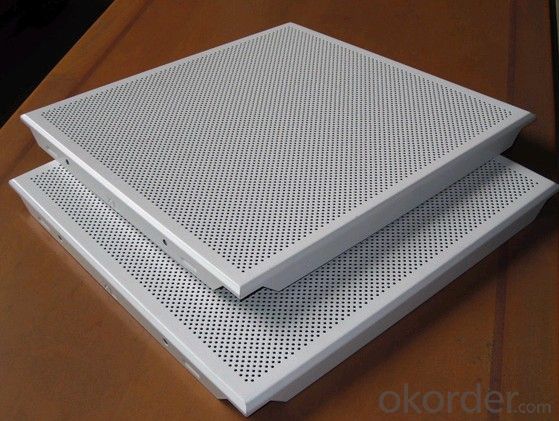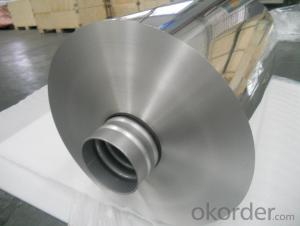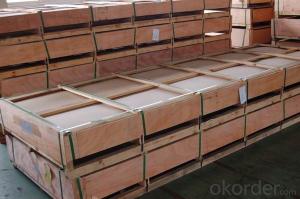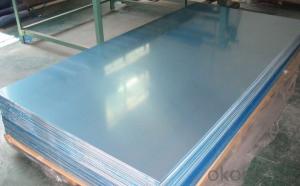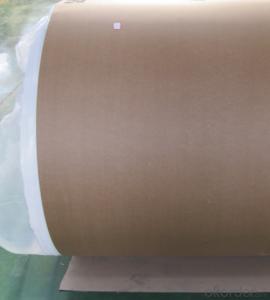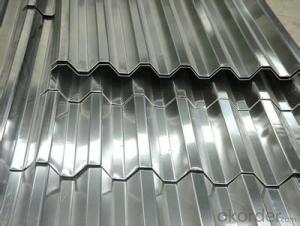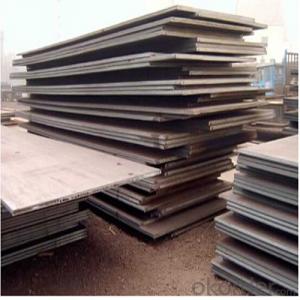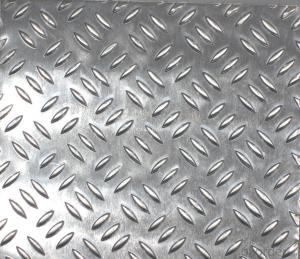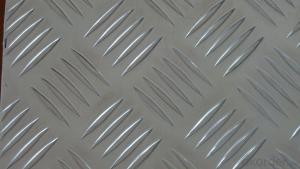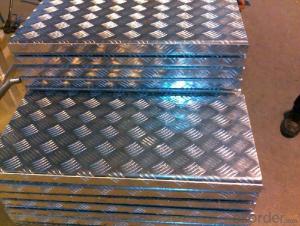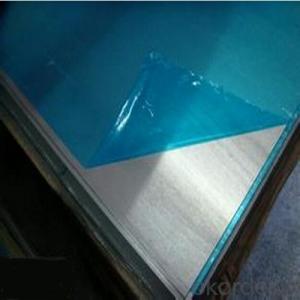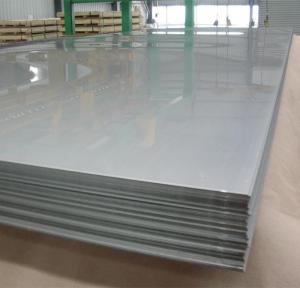Custom Aluminum Sheets in Mm for Roof
- Loading Port:
- China Main Port
- Payment Terms:
- TT OR LC
- Min Order Qty:
- -
- Supply Capability:
- -
OKorder Service Pledge
OKorder Financial Service
You Might Also Like
Aluminium alloys with a wide range of properties are used in engineering structures. Alloy systems are classified by a number system (ANSI) or by names indicating their main alloying constituents (DIN and ISO).
The strength and durability of aluminium alloys vary widely, not only as a result of the components of the specific alloy, but also as a result of heat treatments and manufacturing processes. A lack of knowledge of these aspects has from time to time led to improperly designed structures and gained aluminium a bad reputation.
One important structural limitation of aluminium alloys is their fatigue strength. Unlike steels, aluminium alloys have no well-defined fatigue limit, meaning that fatigue failure eventually occurs, under even very small cyclic loadings. This implies that engineers must assess these loads and design for a fixed life rather than an infinite life.
Another important property of aluminium alloys is their sensitivity to heat. Workshop procedures involving heating are complicated by the fact that aluminium, unlike steel, melts without first glowing red. Forming operations where a blow torch is used therefore require some expertise, since no visual signs reveal how close the material is to melting. Aluminium alloys, like all structural alloys, also are subject to internal stresses following heating operations such as welding and casting. The problem with aluminium alloys in this regard is their low melting point, which make them more susceptible to distortions from thermally induced stress relief. Controlled stress relief can be done during manufacturing by heat-treating the parts in an oven, followed by gradual cooling—in effect annealing the stresses.
The low melting point of aluminium alloys has not precluded their use in rocketry; even for use in constructing combustion chambers where gases can reach 3500 K. The Agena upper stage engine used a regeneratively cooled aluminium design for some parts of the nozzle, including the thermally critical throat region.
Another alloy of some value is aluminium bronze (Cu-Al alloy).
Aluminium foil acts as a total barrier to light and oxygen (which cause fats to oxidise or become rancid), odours and flavours, moistness, and germs, it is used broadly in food and pharmaceutical packaging. The purpose of aluminium is to make long-life packs (aseptic processing|aseptic packaging) for drinks and dairy goods, which allows storing without refrigeration. Aluminium foil containers and trays are used to bake pies and to pack takeaway meals, ready snacks and long life pet foods.
Aluminium foil is widely sold into the consumer market, often in rolls of 500 mm (20 in) width and several metres in length.It is used for wrapping food in order to preserve it, for example, when storing leftover food in a refrigerator (where it serves the additional purpose of preventing odour exchange), when taking sandwiches on a journey, or when selling some kinds of take-away or fast food. Tex-Mex restaurants in the United States, for example, typically provide take-away burritos wrapped in aluminium foil.
Aluminium foils thicker than 25 μm (1 mil) are impermeable to oxygen and water. Foils thinner than this become slightly permeable due to minute pinholes caused by the production process.
- Q: AND WAT R THE THECNOLOGICAL ANDCOSTS AND BENEFITESOF USING ALUMINUM? what health -related and environment-related issues gave surface as aresult of its widespread use in society?
- airplanes are made from aluminum. certain beverages are also. aluminum is cheaper and lighter. the biggest problem is the amount of electricity that it takes to make aluminum
- Q: The which temperature the aluminum evaporates in vacuum?
- Aluminum boils at 2519 °C (4566 °F) at normal pressure. In a vacuum, it might boil (a little) at 808 °C, but actually this is better known as subliming.
- Q: What is the bending radius for aluminum sheets?
- The bending radius for aluminum sheets varies depending on the thickness and grade of the aluminum. Generally, for thin aluminum sheets, the bending radius can be around 1.5 times the thickness of the sheet. However, for thicker sheets, the bending radius may need to be larger to avoid cracking or deformation. It is recommended to refer to specific bending charts or consult with a metal fabrication expert for precise bending radius guidelines for different aluminum sheets.
- Q: Is it possible to use aluminum sheets in environments with high temperatures?
- <p>Yes, aluminum sheets can be used in high-temperature environments, but with certain considerations. Aluminum has a high melting point of around 660掳C (1220掳F), which allows it to withstand high temperatures. However, its mechanical properties can degrade over time when exposed to sustained high temperatures, especially above 200掳C (392掳F). For applications requiring long-term exposure to high temperatures, special heat-resistant aluminum alloys or coatings may be necessary to maintain structural integrity and performance. It's also important to consider the specific conditions and the maximum temperature the aluminum will be exposed to when determining its suitability for a high-temperature application.</p>
- Q: What is the typical cost-effectiveness of aluminum sheets compared to other materials?
- The cost-effectiveness of aluminum sheets compared to other materials can vary depending on various factors such as the specific application, size, thickness, and market conditions. However, in general, aluminum sheets are often considered to be cost-effective due to their unique properties and versatility. Aluminum is a lightweight material, which means less material is needed to achieve the same strength as heavier alternatives. This can result in cost savings in terms of transportation, installation, and overall project expenses. Additionally, aluminum sheets offer excellent corrosion resistance, durability, and a long lifespan, which can further contribute to their cost-effectiveness over time. Furthermore, aluminum is highly recyclable, allowing for significant savings in terms of energy and resources during the recycling process. This recyclability also adds to the overall cost-effectiveness of aluminum sheets, as they can be reused or repurposed rather than disposed of as waste. While the initial cost of aluminum sheets may be higher compared to some other materials, the long-term benefits and savings they offer often outweigh the initial investment. It is important to consider factors such as durability, maintenance costs, energy efficiency, and environmental impact when evaluating the cost-effectiveness of aluminum sheets compared to other materials. Ultimately, the typical cost-effectiveness of aluminum sheets compared to other materials will depend on the specific requirements and circumstances of each project. It is advisable to consult with industry experts or suppliers to evaluate the cost-effectiveness of aluminum sheets in relation to other materials for a particular application.
- Q: Can 101 aluminum sheets be used in aerospace applications?
- Indeed, aerospace applications can make use of 101 aluminum sheets. This particular alloy, known as 101 aluminum, is widely employed in the aerospace sector because of its remarkable strength-to-weight ratio, superior resistance to corrosion, and impressive formability. It is frequently utilized in the creation of structural elements, including aircraft skins, wings, and fuselage panels. Furthermore, 101 aluminum sheets can be effortlessly machined and welded, rendering them exceptionally suitable for aerospace applications that demand precision and durability.
- Q: What are the advantages of using 101 aluminum sheets over other materials?
- One advantage of using 101 aluminum sheets is their high strength-to-weight ratio, making them lightweight yet durable. Additionally, aluminum is highly resistant to corrosion, making it suitable for outdoor applications without the need for additional protective coatings. Aluminum sheets are also easy to work with due to their malleability, allowing for various forming and fabrication processes. Lastly, aluminum is a highly recyclable material, making it an environmentally friendly choice.
- Q: What specific coatings or treatments are required for aluminum sheets to enhance their properties or protect them?
- <p>Special coatings or treatments for aluminum sheets may be needed depending on the application. Anodizing is a common treatment that enhances corrosion resistance and wear. For aesthetic purposes, aluminum can be painted or coated with a clear lacquer to maintain its appearance. Protective coatings like powder coating or electroplating can be used to improve durability and resistance to environmental factors. In certain industrial applications, aluminum sheets may be treated with specific coatings to enhance thermal or electrical conductivity. The choice of coating or treatment depends on the specific requirements of the project, such as resistance to weather, chemicals, or mechanical stress.</p>
- Q: Can aluminum sheet be used for electrical grounding applications?
- Indeed, aluminum sheet finds utility in electrical grounding applications. It possesses remarkable conductive properties, rendering it apt for employment in grounding systems. Its low resistance and exceptional electrical conductivity make it a common choice in diverse electrical applications. With the capability to proficiently transport electrical current and securely disperse it into the ground, aluminum sheet guarantees the safeguarding of electrical systems and averts potential electrical dangers. Moreover, the lightweight and corrosion-resistant attributes of aluminum establish it as a favored option for grounding applications across numerous industries, encompassing construction, automotive, and aerospace.
- Q: What are the mechanical properties of aluminum sheets?
- Aluminum sheets possess several unique mechanical properties that make them highly desirable in various industries. Firstly, aluminum sheets have excellent strength-to-weight ratio, meaning they are lightweight yet offer exceptional strength. This property makes them ideal for applications where weight reduction is crucial, such as aerospace and automotive industries. Moreover, aluminum sheets exhibit good formability, allowing them to be easily shaped and formed into different sizes and configurations. This property makes them highly versatile and suitable for applications requiring complex shapes, such as manufacturing of cans, appliances, and architectural components. Additionally, aluminum sheets have high corrosion resistance due to the formation of a thin, protective oxide layer on their surface. This property makes them highly durable and long-lasting, making them suitable for outdoor applications or environments with high moisture or chemical exposure. Furthermore, aluminum sheets have excellent thermal conductivity, allowing them to efficiently transfer heat. This property makes them widely used in heat exchangers, cooling systems, and other applications where efficient heat dissipation is required. Lastly, aluminum sheets have good electrical conductivity, enabling them to conduct electricity effectively. This property makes them suitable for electrical enclosures, conductors, and other electrical applications. In summary, the mechanical properties of aluminum sheets include high strength-to-weight ratio, good formability, high corrosion resistance, excellent thermal conductivity, and good electrical conductivity. These properties make aluminum sheets a preferred choice for a wide range of applications across various industries.
Send your message to us
Custom Aluminum Sheets in Mm for Roof
- Loading Port:
- China Main Port
- Payment Terms:
- TT OR LC
- Min Order Qty:
- -
- Supply Capability:
- -
OKorder Service Pledge
OKorder Financial Service
Similar products
Hot products
Hot Searches
Related keywords
